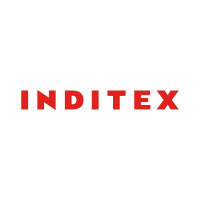
NorthWest Healthcare Properties REIT
TSX:NWH.UN


| US |

|
Johnson & Johnson
NYSE:JNJ
|
Pharmaceuticals
|
| US |

|
Berkshire Hathaway Inc
NYSE:BRK.A
|
Financial Services
|
| US |

|
Bank of America Corp
NYSE:BAC
|
Banking
|
| US |

|
Mastercard Inc
NYSE:MA
|
Technology
|
| US |

|
UnitedHealth Group Inc
NYSE:UNH
|
Health Care
|
| US |

|
Exxon Mobil Corp
NYSE:XOM
|
Energy
|
| US |

|
Pfizer Inc
NYSE:PFE
|
Pharmaceuticals
|
| US |

|
Palantir Technologies Inc
NYSE:PLTR
|
Technology
|
| US |

|
Nike Inc
NYSE:NKE
|
Textiles, Apparel & Luxury Goods
|
| US |

|
Visa Inc
NYSE:V
|
Technology
|
| CN |

|
Alibaba Group Holding Ltd
NYSE:BABA
|
Retail
|
| US |

|
JPMorgan Chase & Co
NYSE:JPM
|
Banking
|
| US |

|
Coca-Cola Co
NYSE:KO
|
Beverages
|
| US |

|
Walmart Inc
NYSE:WMT
|
Retail
|
| US |

|
Verizon Communications Inc
NYSE:VZ
|
Telecommunication
|
| US |

|
Chevron Corp
NYSE:CVX
|
Energy
|
Utilize notes to systematically review your investment decisions. By reflecting on past outcomes, you can discern effective strategies and identify those that underperformed. This continuous feedback loop enables you to adapt and refine your approach, optimizing for future success.
Each note serves as a learning point, offering insights into your decision-making processes. Over time, you'll accumulate a personalized database of knowledge, enhancing your ability to make informed decisions quickly and effectively.
With a comprehensive record of your investment history at your fingertips, you can compare current opportunities against past experiences. This not only bolsters your confidence but also ensures that each decision is grounded in a well-documented rationale.
Do you really want to delete this note?
This action cannot be undone.

| 52 Week Range |
4.38
5.72
|
| Price Target |
|
We'll email you a reminder when the closing price reaches CAD.
Choose the stock you wish to monitor with a price alert.

|
Johnson & Johnson
NYSE:JNJ
|
US |

|
Berkshire Hathaway Inc
NYSE:BRK.A
|
US |

|
Bank of America Corp
NYSE:BAC
|
US |

|
Mastercard Inc
NYSE:MA
|
US |

|
UnitedHealth Group Inc
NYSE:UNH
|
US |

|
Exxon Mobil Corp
NYSE:XOM
|
US |

|
Pfizer Inc
NYSE:PFE
|
US |

|
Palantir Technologies Inc
NYSE:PLTR
|
US |

|
Nike Inc
NYSE:NKE
|
US |

|
Visa Inc
NYSE:V
|
US |

|
Alibaba Group Holding Ltd
NYSE:BABA
|
CN |

|
JPMorgan Chase & Co
NYSE:JPM
|
US |

|
Coca-Cola Co
NYSE:KO
|
US |

|
Walmart Inc
NYSE:WMT
|
US |

|
Verizon Communications Inc
NYSE:VZ
|
US |

|
Chevron Corp
NYSE:CVX
|
US |
This alert will be permanently deleted.
NorthWest Healthcare Properties REIT
NorthWest Healthcare Properties Real Estate Investment Trust engages in the provision of access to a portfolio of international healthcare real estate infrastructure to investors. The company is headquartered in Toronto, Ontario. The company went IPO on 2010-03-23. The firm operates a portfolio of healthcare real estate comprised of interests in approximately 192 properties and 16.2 million square feet of gross leasable area located throughout the markets in Canada, Brazil, Europe, Australia and New Zealand. The company owns and manages office buildings, clinics, and hospitals from coast to coast, including Calgary, Edmonton, Toronto, Montreal, Quebec City and Halifax. The firm's properties include Glenmore Professional Centre, Polimedica Centre, Mehrower Allee, Palm Beach Currumbin Clinic, Hospital IFOR, Abbotsford Private Hospital, Belmont Private Hospital, Ekera Medical Centre, One Medical Place and Frankston Specialist Centre.

NorthWest Healthcare Properties Real Estate Investment Trust engages in the provision of access to a portfolio of international healthcare real estate infrastructure to investors. The company is headquartered in Toronto, Ontario. The company went IPO on 2010-03-23. The firm operates a portfolio of healthcare real estate comprised of interests in approximately 192 properties and 16.2 million square feet of gross leasable area located throughout the markets in Canada, Brazil, Europe, Australia and New Zealand. The company owns and manages office buildings, clinics, and hospitals from coast to coast, including Calgary, Edmonton, Toronto, Montreal, Quebec City and Halifax. The firm's properties include Glenmore Professional Centre, Polimedica Centre, Mehrower Allee, Palm Beach Currumbin Clinic, Hospital IFOR, Abbotsford Private Hospital, Belmont Private Hospital, Ekera Medical Centre, One Medical Place and Frankston Specialist Centre.
Strong Quarter: Northwest Healthcare Properties REIT reported solid Q3 results, with operational strength, strong tenant retention, and same-property NOI up 4.4% year-over-year.
Balance Sheet Progress: Leverage and payout ratios both declined, with further improvements expected from recently announced transactions.
Strategic Actions: The REIT is pursuing asset sales in Europe and internalizing management at Vital in Australasia, aiming to simplify its business and repatriate capital to North America.
Vital Internalization: Northwest will receive NZD 214 million (about CAD 150 million net proceeds) from internalizing Vital management, which will be used to pay down debt.
Healthscope Update: Healthscope ended its rent deferral and repaid all deferred rent, with operator profitability improving across Australia.
NCIB Launched: The REIT introduced a normal course issuer bid, providing flexibility to repurchase units or debentures in the future.
Focus on Deleveraging: Proceeds from transactions are earmarked for debt reduction, with the NCIB as a later-stage capital allocation tool.
European Sale Progress: The sale process for a major portion of European assets is underway, with targeted completion of a transaction by Q1 2026.








































